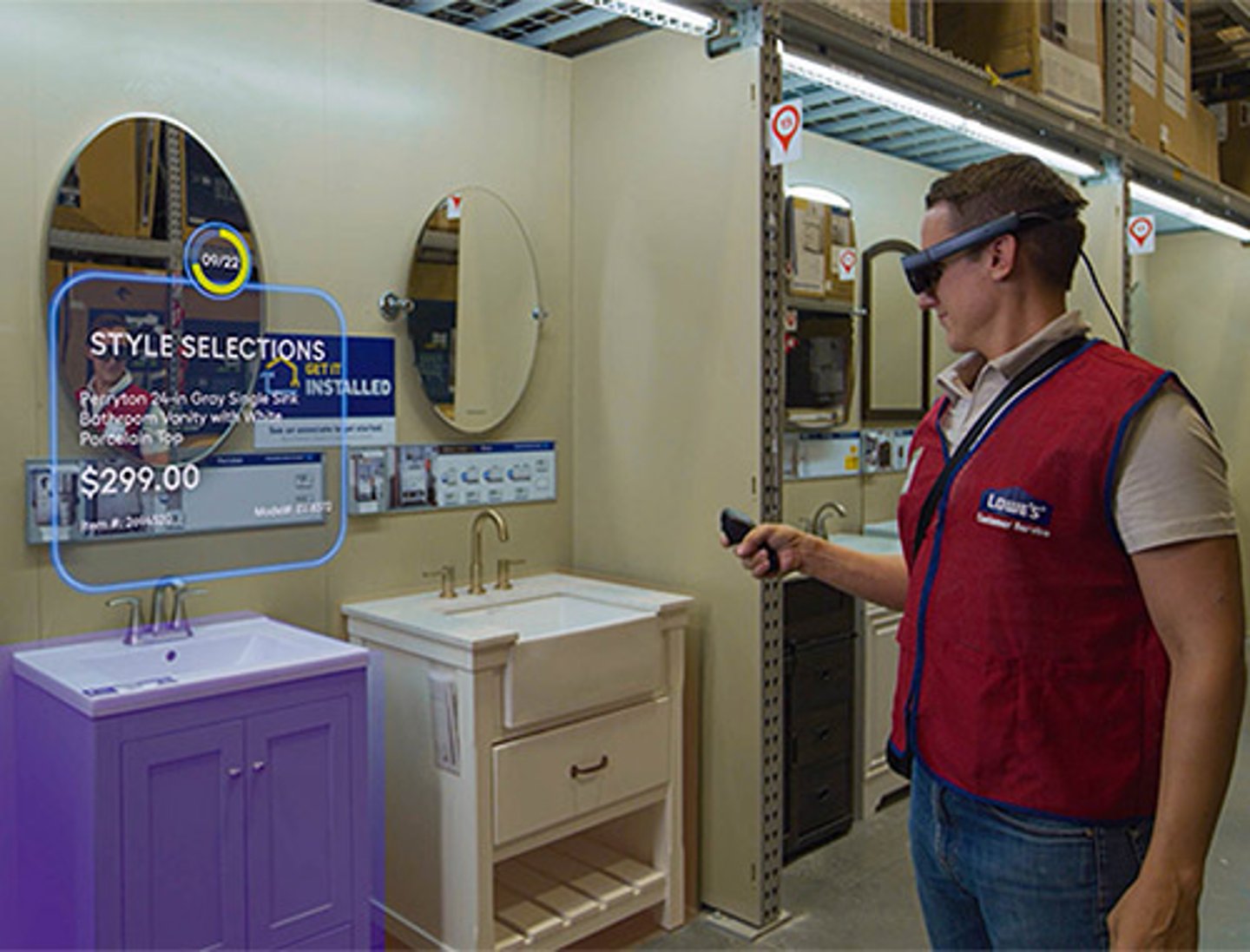NRF 2023: Three solutions worth watching
Digital twin, supply chain sustainability, and machine learning solutions should all be on display at the NRF 2023 “Big Show.”
Attendees at the annual National Retail Federation (NRF) conference can always get a good sense of the direction retail technology will take for the upcoming year. Here are three technologies sure to be featured prominently on the exhibit floor:
Digital twin
“Digital twins” are interactive virtual models of physical environments, products, and/or workflows. They are becoming increasingly popular tools for retailers to digitally conduct testing, check compliance, and detect problems before rolling out changes in the “real world.”
In one notable example of how retailers are currently utilizing digital twin technology, Lowe's Cos. has unveiled digital twins of two of its stores. The home improvement giant is leveraging technology from Nvidia to create photorealistic digital replicas of the stores to enable store employees to visualize and interact with nearly all of a store's digital data.
Lowe’s digital twin solution fuses spatial data with other data from the retailer, including product location and historical order information, and unites it all into a visual package that associates can gain access to on a range of devices, including desktop computers and Magic Leap 2 augmented reality (AR) headsets.
As a result, Lowe’s associates can perform virtual tasks such as checking inventory accuracy, gather and view information on obscured, hard-to-reach items, and testing changes to product placements
In an exclusive interview with Chain Store Age, Liza Amlani, principal of Retail Strategy Group, said retailers can also apply digital twin technology to save time and expense in their product development process.
“Using digital twins, retailers can save so much money by reducing physical sampling,” stated Amlani. “You can go to market more quickly and cheaply by reducing the number of physical samples you have to produce and eliminating guesswork in buying extra materials.”
Supply chain sustainability
A growing number of retailers are adopting a variety of solutions that enable them to operate more sustainable supply chains. While the data is mixed, many recent surveys have indicated that consumers prefer to do business with retailers that have sustainable operations.
[Read more: Consumers committed to sustainable purchases; intent varies by category]
In one such effort, department store chain Macy’s Inc. is deploying auto-boxer and auto-bagger technology enabling it to create unique packaging fitting odd or oversized items, and reducing box volume and waste up to 50%. Macy’s also launched a program to use RFID technology to track participation and weights of store cardboard recycling as part of its goal to increase store recycling rates to 80% by 2025.
Meanwhile, eco-friendly shoes and accessories retailer Rothy’s is utilizing Centric product lifecycle management (PLM) technology to overhaul the design, manufacturing and distribution of its products. The Centric solution provides Rothy’s with a central digital repository, as well as the means for remote collaboration and complete distance working, which it utilized extensively during the COVID-19 pandemic.
Rothy’s also plans to leverage its PLM platform to help achieve its goal of providing circular products by adding circular labeling and instructions for end-of-life recycling.
Machine learning
Machine learning (ML), a subset of artificial intelligence (AI) that analyzes patterns in data to “learn” and adapt in a manner similar to humans, is reaching an inflection point in retail. This once bleeding-edge solution may not yet be a routine retail solution, but is popping up more frequently in the retailer enterprise.
For example, in the case of Just Walk Out frictionless shopping technology, Amazon deploys sensors, optics, and ML algorithms. As a result, the company has reduced the number of cameras required in stores enabled with this solution to make them more cost-effective, smaller, and capable of running deep networks locally. Just Walk Out sensors and algorithms have also evolved to detect a broad range of products and differences in shopping behavior in full-sized grocery stores.
Also, consider how Walgreens is leveraging the ML capabilities of Blue Yonder’s inventory management technology to improve the accuracy of inventory, shrink, and shipping. The drugstore giant uses ML to see what the probable fulfillment rate is, as well as to support the sustained increase in customer usage of omnichannel shopping features, such as buy-online-pickup-in-store (BOPIS), curbside pickup, and same-day delivery, which began during the COVID-19 pandemic.
It is also worth mentioning the game-changing possibilities posed by the recently released and still in development ChatGPT AI-based chatbot. ChatGPT uses ML algorithms to produce conversations and written content with a sophistication far beyond that offered by other AI chatbot solutions to date.
While ChatGPT technology is too new to be featured in any solutions at NRF, look for sophisticated AI-based chatbot solutions to be on display, especially as data indicates many consumers are open to at least some retail chatbot interaction.







